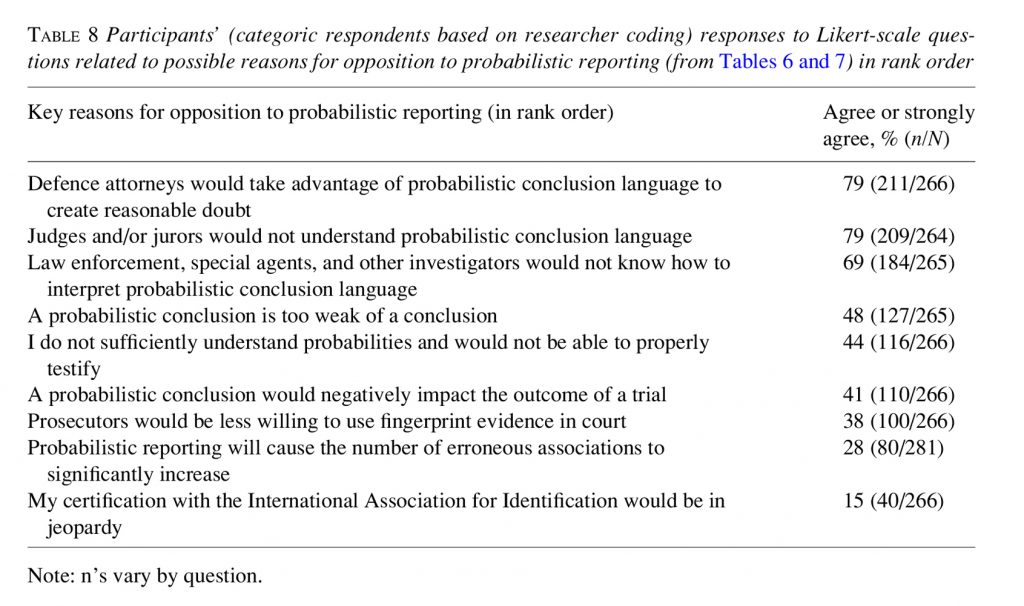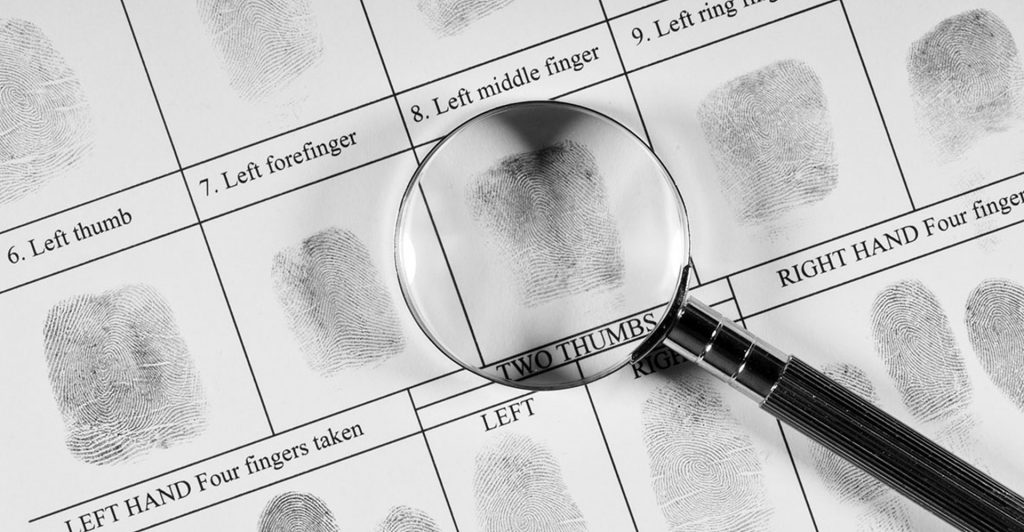Recent efforts have been made to introduce probabilistic reasoning into forensic practice, but it is unclear whether forensic examiners are supportive of a probabilistic approach. Researchers from the Center for Statistics and Applications in Forensic Evidence (CSAFE) set out to understand how examiners feel about probabilistic reporting and identify obstacles impeding its adoption.
Simon Cole, professor of criminology, law and society at the University of California, Irvine (UCI), and Henry Swofford, a Ph.D. candidate at the University of Lausanne, Switzerland and former chief of the Latent Print Branch at the U.S. Army Criminal Investigation Laboratory, led a study that surveyed fingerprint examiners to learn what kind of language they use when reporting evidence: categorically, which has been the traditional method, or probabilistically.
The survey also asked for participants’ opinions on probabilistic reporting, whether they believed it was an appropriate direction for their discipline to take, and the reasons for those opinions. In addition, participants were asked to describe probabilistic reporting in their own words.
The results from the study were recently published in Law, Probability & Risk, and will be the topic of an upcoming CSAFE webinar on Sept. 22. Valerie King, a former graduate student at UCI, also contributed to the study.
Cole said the study found that overall, despite its adoption by a small number of practitioners, community-wide adoption of probabilistic reporting in the friction ridge discipline faces challenges. He said that only 10 percent of the participants reported using probabilistic language. And when asked to provide samples of their reporting language, only 2 percent actually used probabilistic statements.
The study also found that two-thirds of respondents felt that probabilistic reporting is not an appropriate direction for the friction ridge community. Cole said the most common concern respondents expressed in the survey was that uncertain terms could be misunderstood by jurors or used by defense attorneys to undersell the strength of their findings.
The survey suggests that many respondents do not share a common understanding of what is meant by the term “probabilistic reporting.” Almost half of the participants acknowledged that they did not feel they completely understand probabilities and would not be able to testify properly.
The researchers noted in the study that additional education and resources could help examiners more confidently adopt probabilistic reporting. They write, “If probabilistic reporting is to be adopted, much work is still needed to better educate practitioners on the importance and utility of probabilistic reasoning in order to facilitate a path towards improved reporting practices.”

View and download the journal article at https://lib.dr.iastate.edu/csafe_pubs/80/.
View insights from this study at https://forensicstats.org/blog/2021/04/22/insights-mt-everest-we-are-going-to-lose-many/.
Results from this study will be discussed at an upcoming CSAFE webinar. Simon Cole will present “A Survey of Fingerprint Examiners’ Attitudes towards Probabilistic Reporting” on Sept. 22 at 11:00 a.m. CDT. For more information and to register, visit https://forensicstats.org/event/webinar-survey-of-fingerprint-examiners-attitudes-towards-probabilistic-reporting/.




